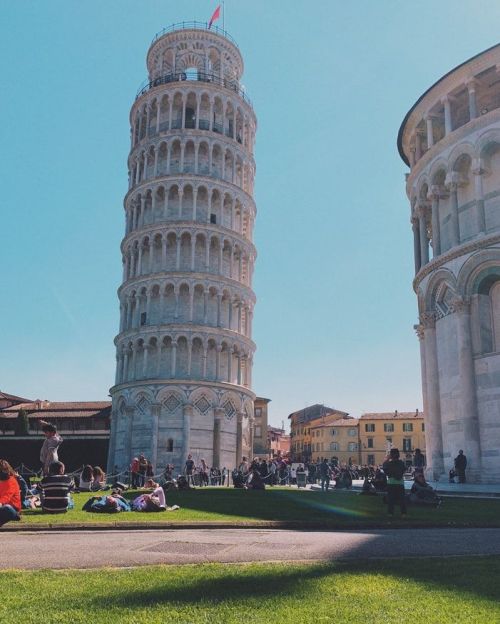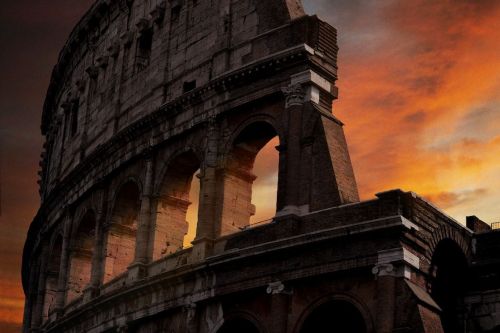San Gimignano is a charming town in the heart of Italian Tuscany, which mesmerizes with an unprecedented beauty, fascinating history, and unique character. It is a picturesque town that brings to mind images from the old days when towns were strongholds of wealthy families and a testament to their prestige.
Today San Gimignano attracts tourists from all over the world, taking them back to medieval times; narrow cobbled streets, interesting house facades, distinctive towers, cafes, and atmospheric shops with local products and sculptures. All this makes up the historic center, which is a UNESCO World Heritage Site.
San Gimignano is a town that takes us back in time and delights us with its unique soul, and one of the most important jewels in the crown of Italian Tuscany.
It covers an area of 138 square kilometers and is located on a hill in the valley of the Elsa River–Val d’Elsa, about 56 kilometers from the capital of Tuscany, Florence, and about 36 kilometers from Siena.
The Etruscan civilization was developed by the people of Etruria who in ancient times inhabited northern Italy (Etruria), a region between the Arno and Tiber rivers, from at least the 7th century BC to 1st century AD.
Etruscans shared a common language and culture and formed a federation of city-states (with each city maintaining its autonomy). The Etruscan civilization was assimilated by the developing Latin culture, with which they bordered to the south.
According to chroniclers, during Lucius Sergius Catillina’s failed coup against the Roman Republic in 63 BC, two patrician brothers, Muzio and Silvio, fled from Rome to Val d’Elsa, where they built two castles – Mucchio and Silva (now San Gimignano).
The name “Silva” was changed to San Gimignano in 450, when bishop Gimignano, the saint of Modena, wanted to save the castle from destruction by the followers of Attila, the Hunnic ruler. As a result, a church was dedicated to the saint, around which grew a walled village later known as “San Gimignano Castle” or “Forest Castle,” because of the vast forests surrounding it.
In the Middle Ages and during the Renaissance, Catholic pilgrims heading to Rome and the Vatican stopped in San Gimignano. The city lay on the ancient Via Francigena road, which was a pilgrimage route that ran from the cathedral city of Canterbury in England, France, and Switzerland to Rome, and next to Apulia, from where the ships departed for the Holy Land.
The city developed not only thanks to pilgrims but also through trade in agricultural products grown on the fertile soils of the neighboring hills.
The city became independent of the bishops of Volterra and established a podestà (in medieval Italian urban republics, the highest official with judicial and military powers), expanded, adding churches and public buildings. There was also an increase in the number of wealthy families, who competed with each other by advocating different political sides, as well as by building increasingly taller towers in the city, which served defensive functions and also emphasized the importance and wealth of the owner.
Towers were built by the city’s wealthy residents from the 13th to 15th centuries. During this period as many as seventy-two quadrangular case tore towers were built, and only fourteen of them remain today.
The first tower measuring 51 meters–Torre Rognosa–was built around 1200 and was part of the Palazzo Vecchio del Podestà (old city hall). The tallest tower measuring 54 meters was the Torre Grossa, which was built in 1311 as part of the new city hall – Palazzo Nuovo del Podestà (Palazzo Comunale).
Possible families competed with each other over the height of the towers until this rivalry was finally put to rest by the local authority. A decree was issued by the city council, under which no tower could be taller than that of the Palazzo Comunale.
They protected the families living in them from invasions, which were quite common in the region in the 12th and 13th centuries. In case of danger, the residents would take shelter on the upper floors of the tower, pulling up ladders behind them, making it difficult for attackers to get inside.
The epidemic of the Black Death reached all of Europe at the time, and between 30 and 60 percent of the continent’s population died as a result. The plague also decimated the population of San Gimignano and the city succumbed to the rule of Florence.
Several Gothic palaces in the Florentine style were built in the city, and the height of many towers was lowered, leveling them to the height of the houses. It never again returned to its former glory, its development was little over the years and the city remained in its medieval state, becoming one of the best-preserved medieval cities in Europe.
However, the city still honors St. Fina (Seraphina), who was born in San Gimignano and died there on 12th March 1253. The collegiate church houses the Santa Fina Chapel, which is a shrine to the saint, which is decorated with frescoes by Domenico Ghirlandaio.
A house still stands in San Gimignano and is said to be the home of Saint Fina.
It is surrounded by three walls. At the highest point, to the west, are the ruins of a fortress dismantled in the 16th century. Eight gates embedded in the second wall lead into the city. These gates date to the 12th and 13th centuries, the main ones being: Porta San Giovanni, behind which begins the city’s main street via San Giovanni, Porta San Matteo, and Porta San Jacopo.
There are four squares in the city center: the Pizza Duomo, Piazza della Cisterna, Piazza Pecori, and Piazza delle Erbe.
The square is shaped like a triangle, and its cobblestone pavement is laid in a herringbone pattern. Around the square stand the city’s most beautiful palaces, some with towers. Its central part is a brick well (cisterna) dating back to 1346, which was the main source of water for the city’s residents. The square is named after this well.
The two main ones are the Collegiata (formerly the cathedral) located in Piazza Duomo and Sant’Agostino, the second-largest church in San Gimignano, which is owned by the Order of St. Augustine.
The Church of Sant’Agostino houses many works of art by early Italian Renaissance artists, including Benozzo Gozzoli, Pietro del Pollaiuolo, and Benedetto da Maiano.
He is credited with 32 sonnets treating the hunting and skirmishes of the Tuscan bourgeoisie.
In 1972 he made a biographical film about St. Francis of Assisi - “Brother Sun, Sister Moon.” Most of the scenes for the film were shot in San Gimignano.
He visited the city on 8th May 1300, as ambassador of the White Guelph party in Tuscany.
The famous ice cream shop, Galateria Dondoli in Piazza della Cisterna, run by master Sergio Dondoli, advertises itself as the best ice cream shop in the world. It won the Gelato World Championship in 2006/2007 and 2008/2009. There you can eat ice cream with unique flavors: saffron and pine nuts, pink grapefruit with sparkling wine, aromatic herbs, and based on the local Vernaccia di San Gimignano wine.












